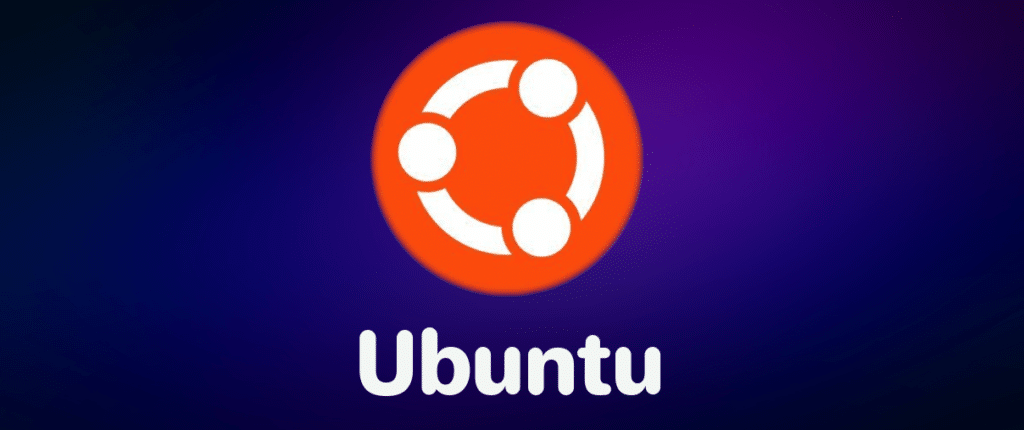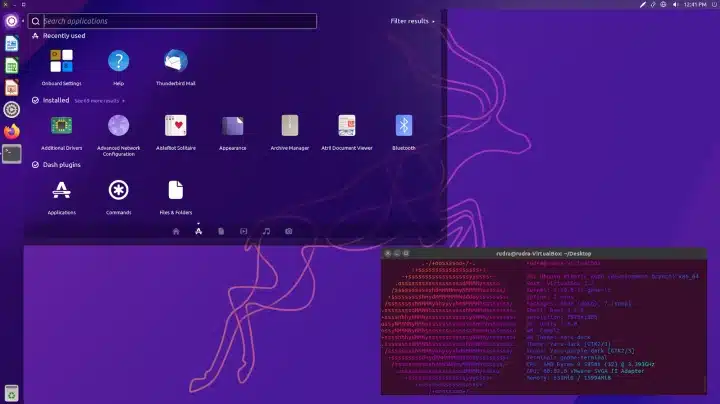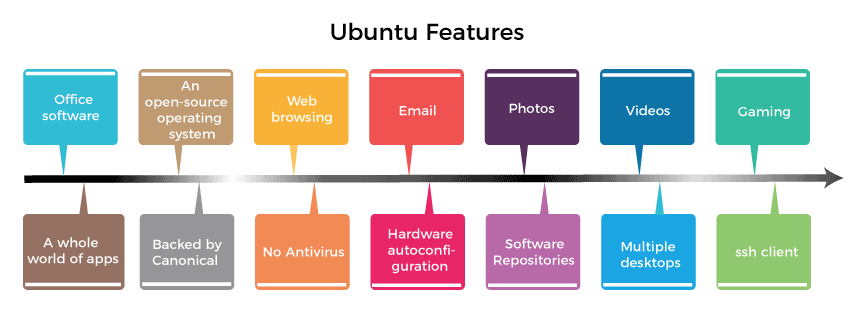TABLE OF CONTENTS
- INTRODUCTION
- TYPES OF UBUNTU INSTALLATIONS
- SINGLE INSTALLATION
- 2 SEPARATE OS ON 2 SEPARATE DRIVES
- 2 OS on ONE DRIVE (DUAL BOOT)
- WINDOWS SUBSYSTEM FOR LINUX (WSL)
- INSTALLING UBUNTU IN VIRTUAL MACHINE
- INSTALLING UBUNTU ON AN EXTERNAL DISK DRIVE
- UNDERSTANDING THE PROBLEM
- ACKNOWLEDGING THE MYTH
- THE SOLUTION
- 3 KEYFEATURES OF UBUNTU FOR BIOINFORMATICS
- FAST & LIGHT OS
- FREE OS WITH LARGER COMMUNITY SUPPORT AND HIGHER SECURITY
- MORE VARIANTS FOR YOUR CONVENIENCE
- CONCLUSION
Before we look into the key features of Ubuntu for Bioinformatics let us first understand a few things about Ubuntu like: What is Ubuntu, Types of Ubuntu Installation, The Problem, Acknowledging the Myth & Discussing the Problem. Then it will make more sense and connect the dots for a lot of people about these 3 key features.
INTRODUCTION

When we talk about working in Bioinformatics, people always look forward to using Windows OS for installing the tools & running the Bioinformatics. But if we look into the matter sensibly Bioinformatics processes are very heavy in nature i.e., very system intensive which put load on the hardware of the system. On the other hand, Windows Operating System is also very heavy in itself.
So, when both the heavy (system intensive) processes are running on the system. The system is not able to decide which task to dedicate its computing power to? So, we end up dedicating more time to run a process than it should take.

On the contrary if we opt for Ubuntu/Linux OS for running Bioinformatics tasks, Ubuntu being a lighter OS runs the tasks faster and is more secure and powerful than any other OS available. A lot of software developers and other intensive task professionals use Ubuntu as their preferred OS for their day-to-day work. Most of the life science professionals willing to take up bioinformatics have either never heard of Ubuntu, or they are afraid of switching to Ubuntu for their daily work needs.
In this Blog I will try to include all the things required by any newbie willing to know about Ubuntu OS in detail. So, it becomes easier for them to switch to it and comfortable.
Before we understand how to use Ubuntu, lets first understand how we can install Ubuntu OS and be ready to use it.
TYPES OF UBUNTU INSTALLATION

There are a number of ways in which one can install Ubuntu and use it. Sharing the most common ways how most people are using Ubuntu:
SINGLE INSTALLATION
In this type of Installation only the Ubuntu OS is installed on the system. Just like we get Windows OS pre-installed on our laptops/desktop PC. Same way only Ubuntu OS is installed on our PC and all the work needs to be done on it only.
This is the best type of installation for Ubuntu OS installation when it comes to running the bioinformatics tasks on our system. It helps us running the processes more efficiently and optimum utilization of the resources happens.
2 SEPARATE OS ON 2 SEPARATE DRIVES
One can opt for installing Ubuntu OS on one drive and Windows OS on the other and choose which OS to open when the system starts. This needs to be chosen every time system starts.
This can feel like a bit hectic that every time one needs to select which OS to boot into otherwise the default OS will open every time. It may be Windows or Ubuntu depending on your system. It can be a bit restricting also if one needs to use windows for some work and at the same time need to run the process in Ubuntu in that case only one thing can be done.
2 OS on ONE DRIVE (DUAL BOOT)
Dual boot is also a good option but again a restricting One that at a time you can use either of the OS. But this can only be done if you are installing your OS on a hard drive. It is not recommended that you do the dual boot when you are using a SSD (Solid State Drive). Dual Boot is not good for your drive’s health; hence experts forbade us to do so.
WINDOWS SUBSYSTEM FOR LINUX (WSL)
In this option one can use the Ubuntu with the help of Ubuntu App in windows OS which helps by providing the Ubuntu Environment for running the process. This can be a good alternate for those who are beginning to work in the field of Bioinformatics and want to get along with the Ubuntu OS.
But it will also come with the limitations of the computing power as it will be just same as running the process in Windows, as in the background Windows is running and eating on your available Computing power. But as I mentioned earlier will be good for the beginners as they can practice running the commands in Ubuntu OS before switching to the complete Ubuntu OS environment.
INSTALLING UBUNTU IN VIRTUAL MACHINE
Installing and running the Ubuntu for Bioinformatics on a virtual machine is an alternate but for running very minor processes as there will be limitations of Disk Space and Available RAM (random access memory) which is a crucial component in running any task.
INSTALLING UBUNTU ON AN EXTERNAL DISK DRIVE
It will be just like installing Ubuntu for Bioinformatics tasks on a separate drive the only difference will be that you will be connecting the drive with the USB and booting into it.
UNDERSTANDING THE PROBLEM

There is a good chunk of people who learn Bioinformatics on their own with the help of referring different books and tutorials and equal number of people are there who learn Bioinformatics by attending different Bioinformatics Workshops or Training programs being offered by some Companies or the Research Institutes. But there is barely anyone who discusses the importance of using Ubuntu for Bioinformatics tasks.
So, Majority of people working in Bioinformatics are never told the importance of using Ubuntu for Bioinformatics. They think that it is ok to use Windows and why to Migrate to any other tools and get out of their comfortable OS. Hence, it lead them to end up with dedicating more time and efforts in getting any task done just because of lack of information about the availability of such a powerful and fast OS and there is barely anyone talking about it and emphasising on it’s use.
ACKNOWLEDGING THE MYTH
While discussing the problem we talked about majority of people who don’t know about Ubuntu whereas there are some people who know about this but are afraid of switching to Ubuntu as they think that it is a different OS and they won’t be comfortable with it. Whatever work they need to do for that they will have to type the commands and when it comes to typing the commands Life Science people try everything possible to avoid it.
But, in today’s world where things are all going into automation and more accuracy is required in work, so some day or the other life science people will have to embrace it whether like it or not. Hence, this is the best time to start taking baby steps and working with commands by understanding them.
The Other myth is that Ubuntu is a complex OS which again leads to people not opting for it.
THE SOLUTION
Today everything is moving towards Automation, now to be able to run automation one needs to have basic knowledge of working with command line tools then it will become easier to run or learn the automation process.
In the beginning it might feel difficult but as you continue the learning, you will start understanding the science behind the commands we run to get the job done.
So, you are not moving away from your life science background instead you are moving closer to running more efficient processes and generate desired results as in command line you can design your own commands to get your desired results. That will only be possible if you know how to run processes in Ubuntu OS then the whole thing will make more sense to you and you will also understand why more professionals and researchers abroad are using Unix (Ubuntu/Mac) for running their Bioinformatics processes.
3 Key Features of Ubuntu For Bioinformatics

FAST & LIGHT OS
Ubuntu is the preferred OS for a lot of developers like software, app, web Etc. because of it’s speed and limited GUI (Graphical User Interface) which makes it a more lighter OS compared to Windows. A number of features are same in Ubuntu with Windows, as very limited GUI is given in Ubuntu it becomes more lighter and Faster OS.
The biggest advantage of Ubuntu being a lighter OS is that most of your computation power can be dedicated to running your process instead of running the OS. So, that your process can get completed in lesser amount of time as compared to Windows OS.
FREE OS WITH LARGER COMMUNITY SUPPORT AND HIGHER SECURITY
YES, you read it right Ubuntu is a Free OS i.e. you don’t have pay a penny to download, Install & Use it. Ubuntu is one of the largest open-source OS which is available for use. Along with one of the biggest open community of developers, scientists who are using ubuntu and are open to help when ever they are available.
On top of this, it is the most secure OS available i.e. you don’t need any anti-virus in Ubuntu which eats on your RAM of the system. Regularly the security patches are released from the developers to keep it secure from any kind of Virus or Malware attacks. So, in all it is a Win-Win-Win situation for the users.
MORE VARIANTS FOR YOUR CONVENIENCE

If you are running an old laptop or desktop and if they are not able to run your Windows or if they hang a lot you have the convenience of using the even lighter versions of Ubuntu and get the blazing fast response out your old and dead PC. Some of the examples lighter versions of Ubuntu are: xUbuntu, Lubuntu, Bodhi Linux, Kubuntu, Ubuntu Mate Etc. and yes they all are available free of cost.
CONCLUSION
If you want to have a good & long carrier in Bioinformatics or any other life science field for that matter you need to get comfortable with command line and that can be done in Ubuntu OS. It is not necessary that you need to directly switch to the Ubuntu for Bioinformatics and then figure out the things instead start by taking the baby steps and start by installing the smaller versions like Ubuntu in Virtual Machine or WSL and then climb up the ladder by installing the complete OS in any form based on your work convenience. Because ultimately tomorrow if not today everything is going to get into automation.
Now, it will be completely your call whether you want to build the DAM after the flood or you want to be pre-prepared to take up the opportunity when it comes to make the most out of it. As, in the post COVID era things are changing more rapidly than they ever have.
To explore more about using Ubuntu for Bioinformatics you can join us for a 3 Hour Short course on Genome Analysis where we will also discuss the importance of Ubuntu for Bioinformatics, you can register for the short course HERE
We also provide Ubuntu based Bioinformatics systems for running your day-to-day Bioinformatics works based on your budget unlike the standard server systems which are available in the market. You can visit our website to book your appointment and learn more about our service offering HERE.
This article is originally published HERE









0 Comments